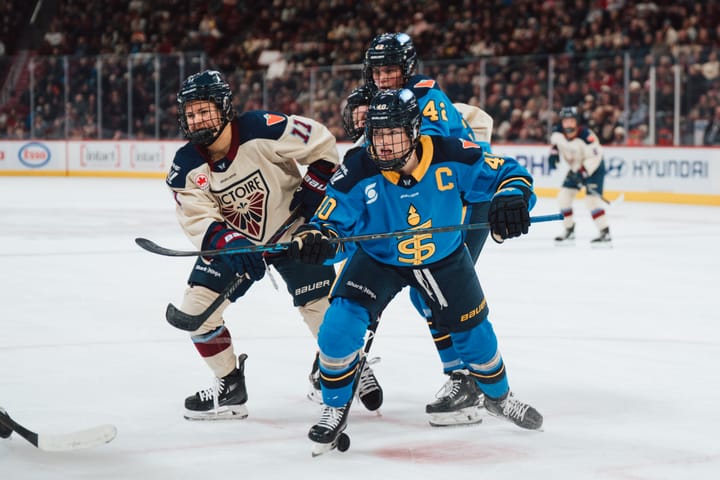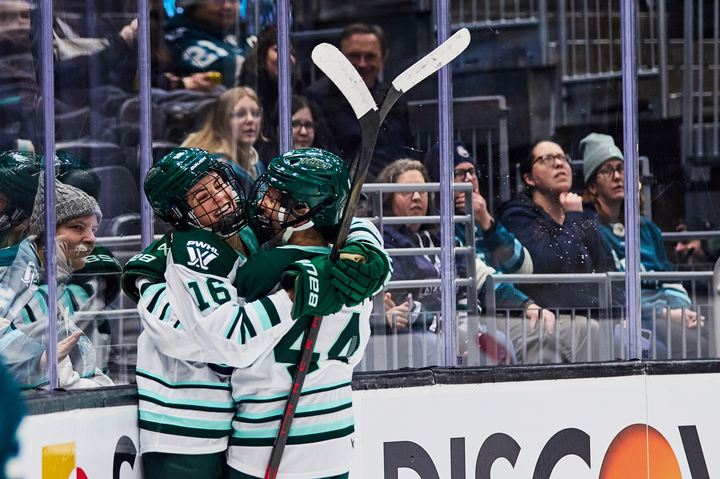Lyndsey Fry is growing hockey in Arizona
Fry will continue to give back and grow the game in her home state in her new role with the Coyotes
On Nov. 15, the Arizona Coyotes hired Lyndsey Fry to be special advisor to team President and CEO Ahron Cohen and to serve as a brand ambassador. Fry, who won silver with Team USA at the Sochi Olympics, is now one of the few women working with or in an NHL front office after playing the game at an elite level.
“I realized that I could offer more than just running the girls’ program, which I still continue as part of this new job,” Fry told The Ice Garden last week. One needs only to look at the growth of youth hockey — both boys’ and girls’ — in Arizona to appreciate what Fry has helped make possible over the last few years.
According to an AP article in August, youth hockey participation in Arizona has grown 109 percent over the past five years. For some, the name Auston Matthews immediately comes to mind as the catalyst for that growth. But the Coyotes believe Fry has also played a vital role, especially for girls’ and women’s hockey.
Over the past year, participation on women’s hockey in Arizona has increased 31 percent from 580 to 757 players. Over the past five years (2012-2018), women’s hockey participation has grown 152 percent from 301 to 757 players.
When Fry and Minnesota Whitecaps forward Katie McGovern were growing up, the landscape of girls’ hockey in Arizona was radically different.
“I’m sure Katie said something similar, but when we were kids there really wasn’t a ton for the girls,” Fry told The Ice Garden. “When I first started playing there really wasn’t a girls’ program at all. Then, as I got a little bit older, the Arizona Selects came about and had a couple of teams. But really, it was just maybe we could put together one team in the Valley at any given time while I was growing up. And that’s assuming that everybody — every girl who was playing — actually decided to play for the girls. So, we’re talking maybe 10 to 15 girls in an age span of four to five years, and that was it. The opportunities back then were really slim.
“If you fast forward ahead 20 years to where we are today, with our program in the summer with the Small Frys, we have 60 girls out there just learning how to play the game,” Fry continued. “So, we’ve come quite a long a way. The rinks have done a great job fostering the girls in their buildings and we’re just trying to build on that and make sure that the girls have opportunities here, so that they don’t feel they have to leave the way that Katie and I did when we got older.”
Related
Katie McGovern and the Whitecaps’ hot start
There are already over 40 girls signed up for the Small Fry program next summer. That figure alone is a testament to the growth of women’s hockey in Arizona, and it only scratches the surface of what Fry and the Coyotes are hoping to do. On Nov. 28 the Coyotes announced a multi-year plan to fund hockey curriculum for physical education classes at Arizona public schools.
Needless to say, Fry never had that opportunity in her youth, which is why she’s so passionate about making it happen today.
After playing high school hockey in Arizona, Fry went on to play for the Colorado Selects, before beginning her collegiate career at Harvard University. She won a gold and silver medal with Team USA at the IIHF U-18 Women’s World Championships in 2009 and 2010, before winning gold at the 2013 Women’s World Championship. The next year she won silver with Team USA at the Sochi Olympic Games. After Sochi, Fry returned to Harvard to captain the Crimson in the 2014-15 season. She finished her NCAA career with 108 points in 125 games.
As promising as her hockey career was, Fry knew she wanted to do something else related to the game that she loved. Something big.
“I definitely had a moment while I was at Harvard where I felt that if I stayed in hockey, particularly youth hockey, it would have been a waste of my degree,” Fry revealed. “I felt that pressure, I was at an Ivy League school and was expected to do big things and get a big, six-figure job right out of college. I think it really was the Olympic experience that opened my eyes and shifted my mentality. I realized, ‘Wow, I’m the first Olympian, male or female, hockey player out of the state of Arizona.’
“The more that the Olympic process continued, I realized how big of a deal that was and I felt the responsibility that came along with that,” Fry continued. “Who else is going to go home and make this happen? Who else is going to have the platform that I do?”
When her silver medal was placed around her neck, Fry thought about her family and all the people who helped her get to Sochi in 2014. It was at that moment that she realized what she wanted to do. “I decided that I was going to go home and give back to the hockey community, for as long as they need me, and get girls’ hockey off the ground in Arizona.”
Fry is the Coyotes’ newest brand ambassador, but her new role goes far beyond shaking hands and helping to spark an interest in hockey in young people. In her cross-departmental role as an adviser, she will provide “strategic advice” on brand awareness, community engagement, corporate communication, and operational efficiencies for the Coyotes organization. In other words, she’s putting her master’s degree from the W.P. Carey School of Business at Arizona State University to good use.
Fry’s new role is all about continuing to contribute to the growth of the game that she loves while working for an organization that values her insight, knowledge, and abilities. Hockey, especially women’s hockey, has come a long way since Fry won gold at the 2009 U-18 IIHF Women’s World Championship. And for Fry, that is a huge source of pride.
“I think the most important thing that we’re able to offer these girls now is really mentorship and the visualization of those different paths,” Fry explained to The Ice Garden. “Katie and I are obviously some of the big examples, but Makenna Newkirk, who’s playing for Boston College and Team USA U-22, she’s also from Arizona ...
“We have a lot of girls who grew up here who went on to play Division-III, club hockey and many of them are now giving back their time in the summer to work with the girls,” Fry continued. “The reason they’re doing it is because they realize that we didn’t have that to look up to as kids. Now we have the power to do that.”





Comments ()